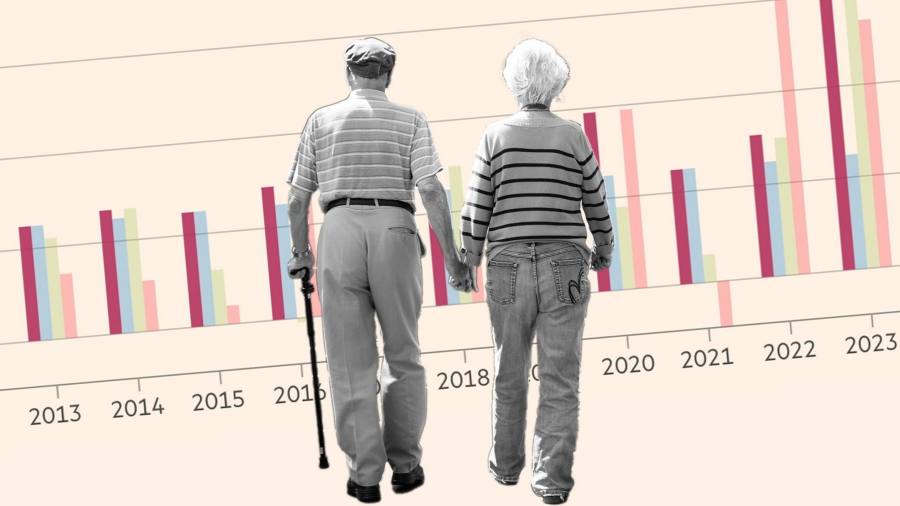
Receive free UK politics updates
We’ll send you a myFT Daily Digest email rounding up the latest UK politics news every morning.
The Treasury is preparing to increase the UK state pension by more than 8 per cent next year because of the controversial “triple lock”, which has raised retirees’ incomes faster than workers’ wages.
The sharp increase in state pension payments follows a 10.1 per cent rise this year. Pensioners who were protected from last year’s energy-driven inflation will now receive another boost, this time in line with the increase in average wages.
Since 2010, the triple lock has ensured the state pension rises each year in line with inflation, average earnings or by 2.5 per cent, whichever is higher. It was only suspended in 2022-23 when wage data was distorted by the Covid crisis.
The triple lock for next year will be set by pay growth, which rose by an annual rate of 8.2 per cent in the April to June period. Economists expect a similar figure to be published on Tuesday for the May to July period that will be used for the pension rise, partly reflecting one-off bonuses for public sector workers.
The rise will ensure that the state pension is more than 11.3 per cent higher in 2024-25 than it would have been if it had increased in line with earnings since 2010, according to Financial Times calculations.
The increases are set to be about 12.5 per cent higher than price growth over the same period.
The Department for Work and Pensions has estimated the cost of the state pension will rise from £124bn this year to £134bn next year — with the peg to rapid wage growth adding almost £3bn to this figure.
This year’s 10 per cent rise was linked to the inflation rate in September 2022. Jeremy Hunt was torn over whether to honour the triple lock commitment after he was appointed chancellor last October, as he grappled to clear up the fiscal mess left by Liz Truss’s shortlived government.
Mel Stride, work and pensions secretary, said in June that a commitment to retain the pensions triple lock would “almost certainly” be included in the Conservative manifesto at the election expected in 2024. Tory officials declined to comment on the party’s future manifesto.
Labour has so far supported the triple lock but Sir Keir Starmer has not committed to including the pledge in his party’s manifesto.
Senior Labour officials admitted that if the Tories promised to continue the policy into the next parliament, Starmer would almost certainly be forced to follow suit for political reasons.
The Office for Budget Responsibility has regularly highlighted the risks to the public finances from the triple lock, particularly when economic data is volatile because pensioners receive the best uprating possible.
“The triple lock has the effect of ratcheting state pensions higher as a share of GDP following a shock,” the fiscal watchdog said in its report on risks to the public finances in July.
Based on the history of the triple lock since 2010, the OBR estimated that the average annual increase in the state pension would cost 1.9 per cent of GDP every year by 2072-73 — adding a total of £943bn to the UK’s public debt over the 50-year period.
The Department for Work and Pensions said: “The government is committed to the triple lock. As is the usual process, the secretary of state will conduct his statutory annual review of benefits and state pensions in the autumn, using the most recent prices and earnings indices available.”